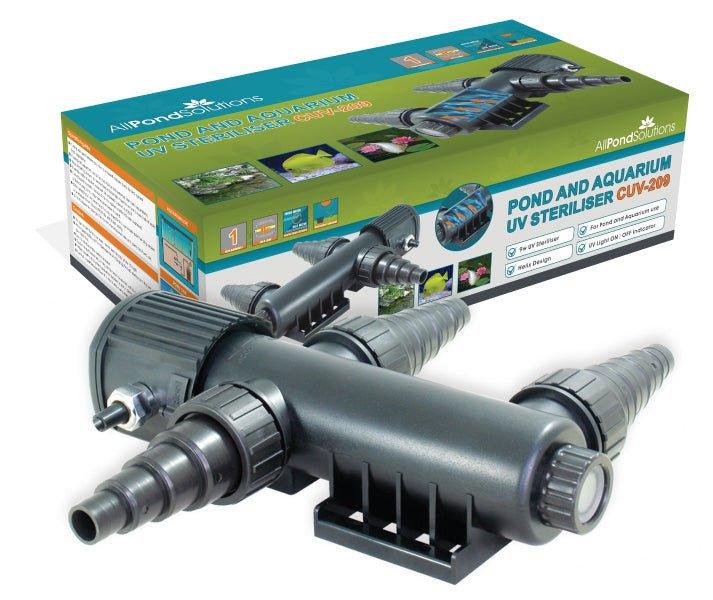A guide to the Pond Spring Clean
Have you been looking out the back window at the sleepy mess that winter has left you with? We have a comprehensive guide to restoring your pond back to health. Spring is a very important time for cleaning in order to get your pond prepared to thrive for the new Season.
De-winterise
First thing to do is to ‘Wake up’ your pond. It’s time to dig out the equipment that you removed and put in safe storage for the winter months. If you didn’t clean the equipment thoroughly before storage then now is time to do so. Maintenance should be carried out according to the manufacturer’s guidelines and remember to lubricate the O-ring seals. Some people will move the pond pump higher to increase the surface movement and prevent it freezing over. It also helps keep the warmer water at the bottom where your fish will be. If you moved the pump then you’ll need to move it back down to its lower position in the pond so the warmer water can be mixed together again.
It is important to consider replacing filter media and UV bulbs at this point. UV bulbs should be replaced every 8-12 months, so spring is the perfect time to do this as it wouldn’t have been in use over winter.
If you covered your pond with netting to protect against falling leaves and debris, remove the netting and clear this away. The easiest way to do this is to remove the anchors or pegs on one side and flip it over.
Clean It Up!
You may wish to pump some of the water out to lower the water level and expose some of the perimeter and planting shelves.
Leaves which have fallen into the pond need to be removed, as they decay and will cause an ammonia spike as well as upsetting the PH. Clear all dead organic matter from the surroundings to prevent it falling into the pond and trim back the withering foliage.
You can use a hose nozzle to ‘blast’ debris and built up sludge from the exposed pond edges. Using a long-handled fish net or pond vacuum you can remove the remaining leaves and sludge from the pond surface and floor.
You may have moved your plants deeper into the pond to protect from frost through the colder months, so now the shelving is clear you can move them back up.
Pond Skimmers can also be added to your pond to remove floating debris, leaves and duckweed.
Water Quality & Testing
Once the pond is clean you’ll need to top your water back up or if you didn’t lower it then a partial water change should be performed. It is important to use additives to dechlorinate the water you are adding. Once completed, check back and test the water parameters using a good quality test kit. It is advisable to use an all-purpose treatment to protect against any parasites and bacteria at this stage. This is because the immune system of your fish is recovering after the winter period.
Feeding
As the weather begins to warm in the spring, you’ll notice that your fish become more active. Their metabolisms will begin to speed up and after a few consecutive days of warm weather you can begin to start feeding again. The temperature needs to be at least 10°c. It’s important that you only feed when there’s an extended period of warmer weather. This is because the protein in fish food is harder to digest, so the fish need a few days of warmth to get their metabolism up to speed.
New Equipment Additions
Now you have a healthy and refreshed pond you may wish to add some additional equipment to bring the pond alive this summer.
Lighting
Pond Lighting can create a stunning setting for your pond and garden. It can light up the flowing water from your features and reflect from the surface mirroring a natural moonlight effect. Pond lights can be added externally or submerged inside of the pond. We sell options to attach lights to the pond pump or have them free standing. It is important to position submerged free standing lighting out of the immediate contact of your livestock. You may wish to consider weighted wide caging to prevent them from knocking into it.
Placement of lighting is important to consider. Lights placed around the sides of a pond directed toward a central feature will provide a dramatic effect and focal point. If placed around the outside of a pond with a lot of foliage and overhanging branches, they will highlight the plants and objects placed on the banks and landscape.
Please consider electrical safety when planning to add this product, you may wish to consult a professional for advice.
Air Pump
During warmer weather, the demand for oxygen is much higher, especially if you have a heavily planted pond as they use up the oxygen at night for growth. Any water being pumped in to the pond such as filters, pumps, water features and other similar equipment, will aerate it to a certain degree.
The job of an air pump is to force air into the system commonly via airline and air stones fed through a multiple outlet manifold. This increases air circulation as you create an underwater current which prevents dead spots and some area's becoming stagnant.
The improved circulation will move highly oxygenated water from the surface lower in the pond allowing water with more carbon dioxide and less oxygen to the surface of the tank where it can release its carbon dioxide and take up oxygen. This will keep your pond and its inhabitants healthy
